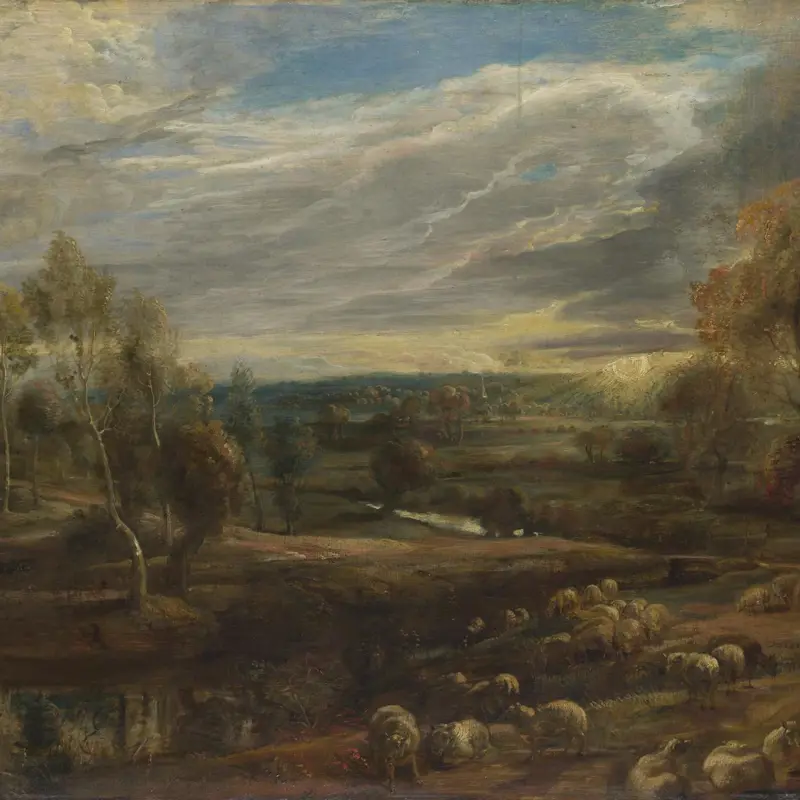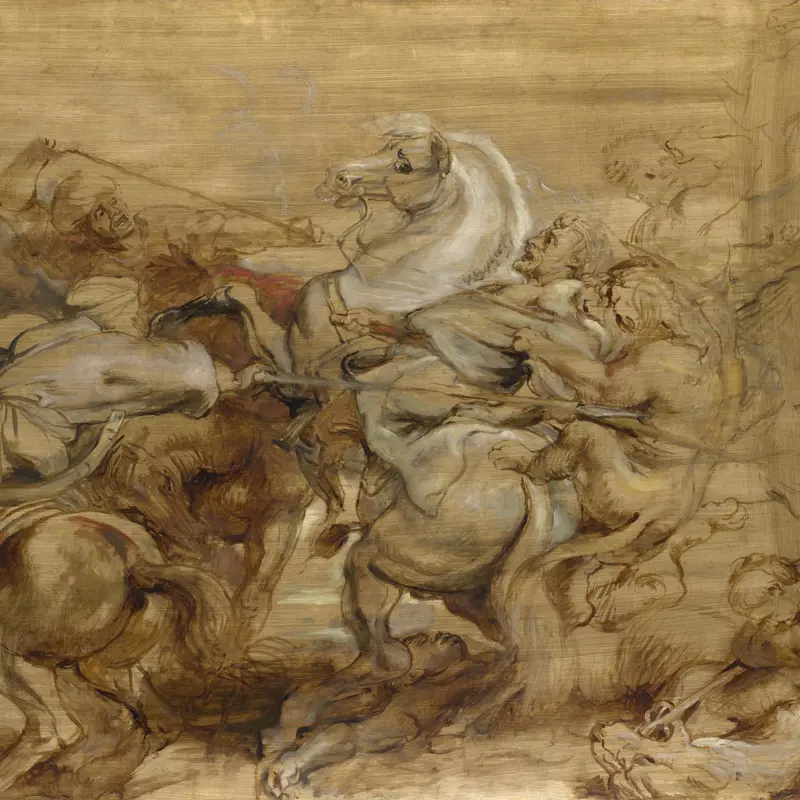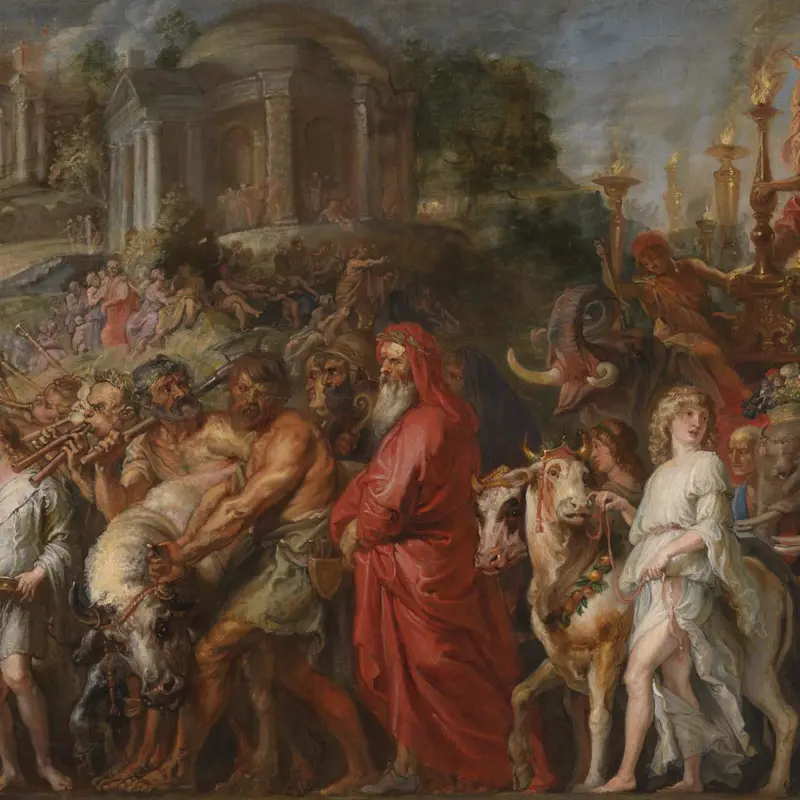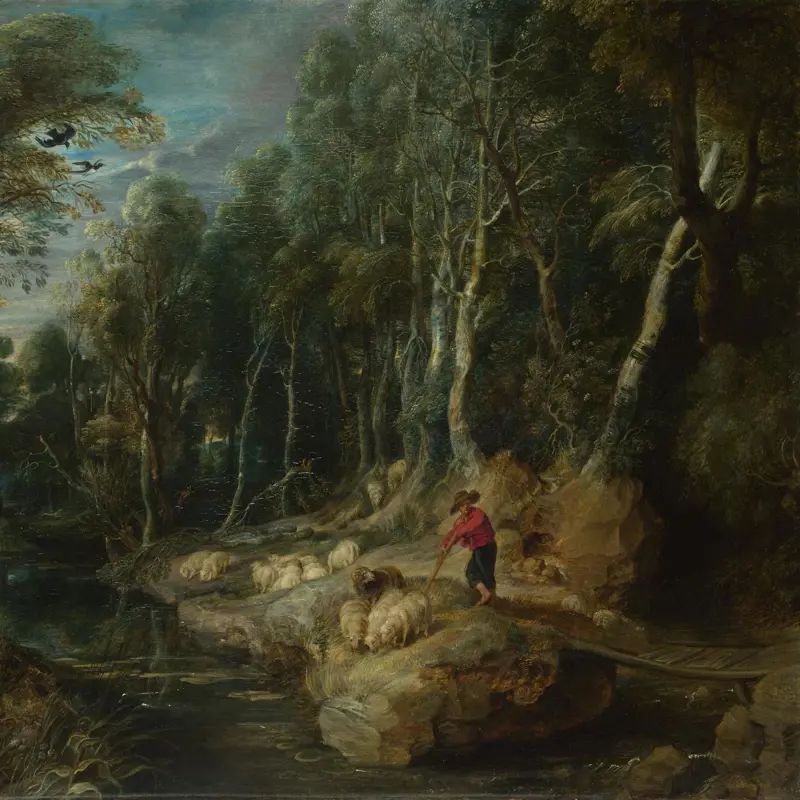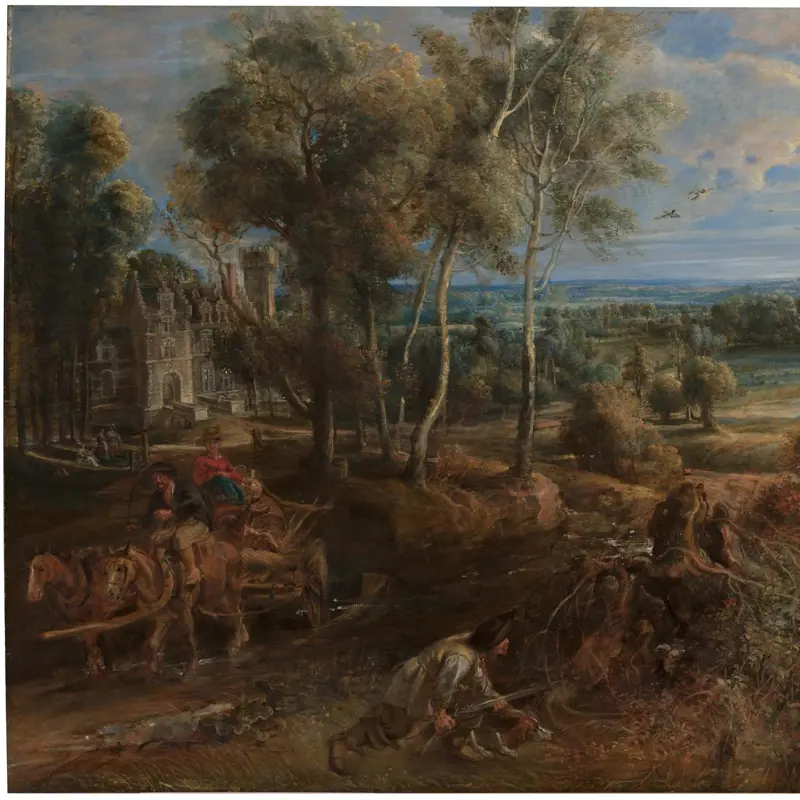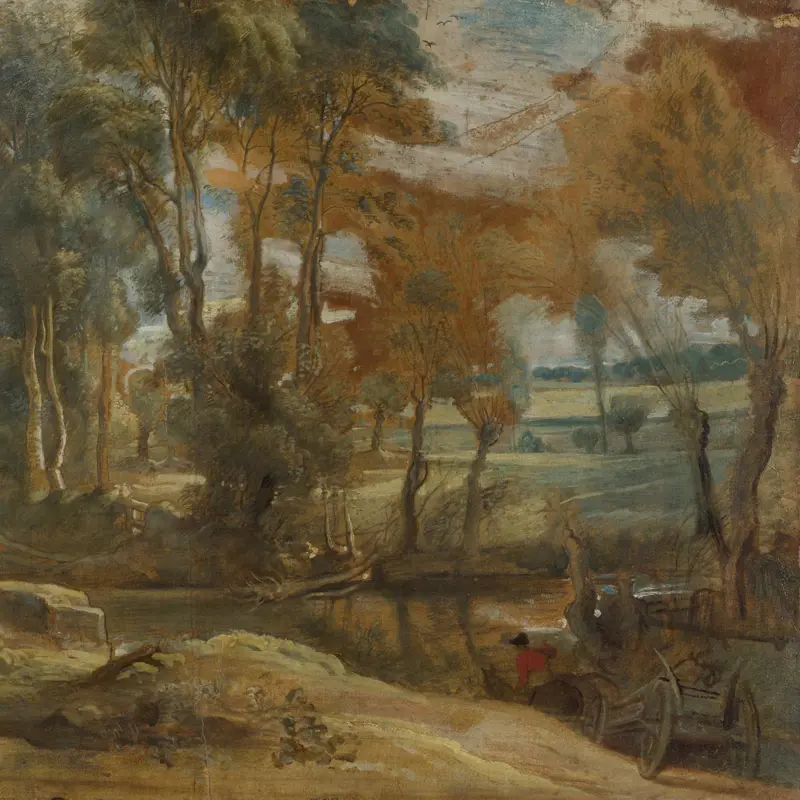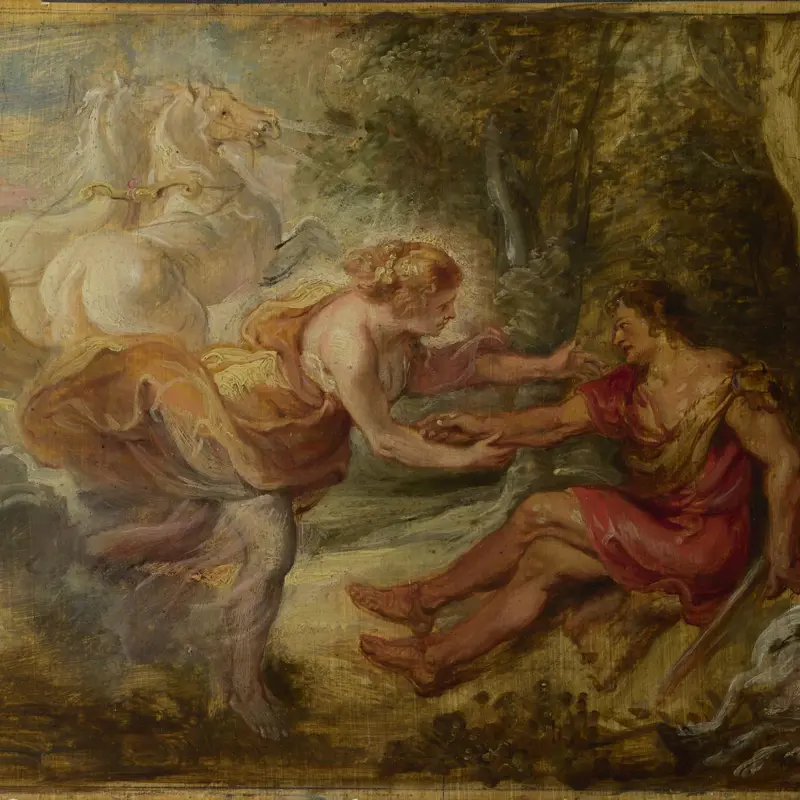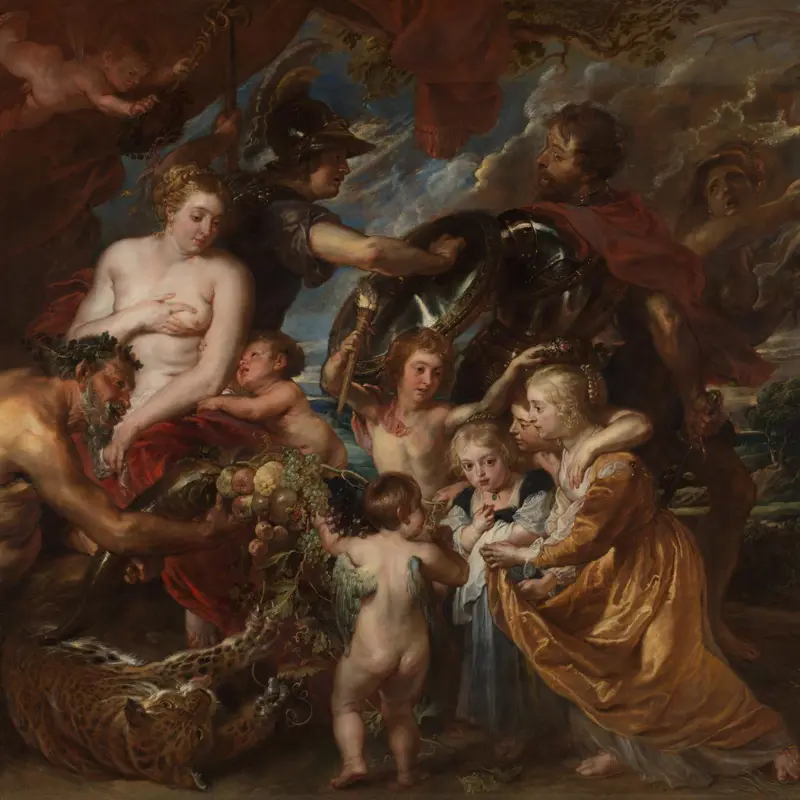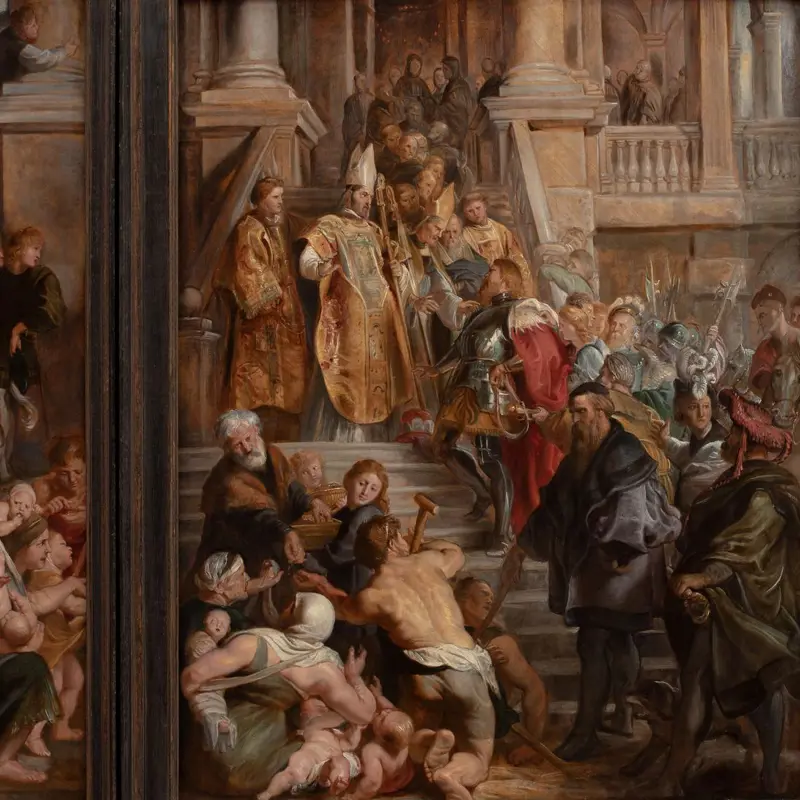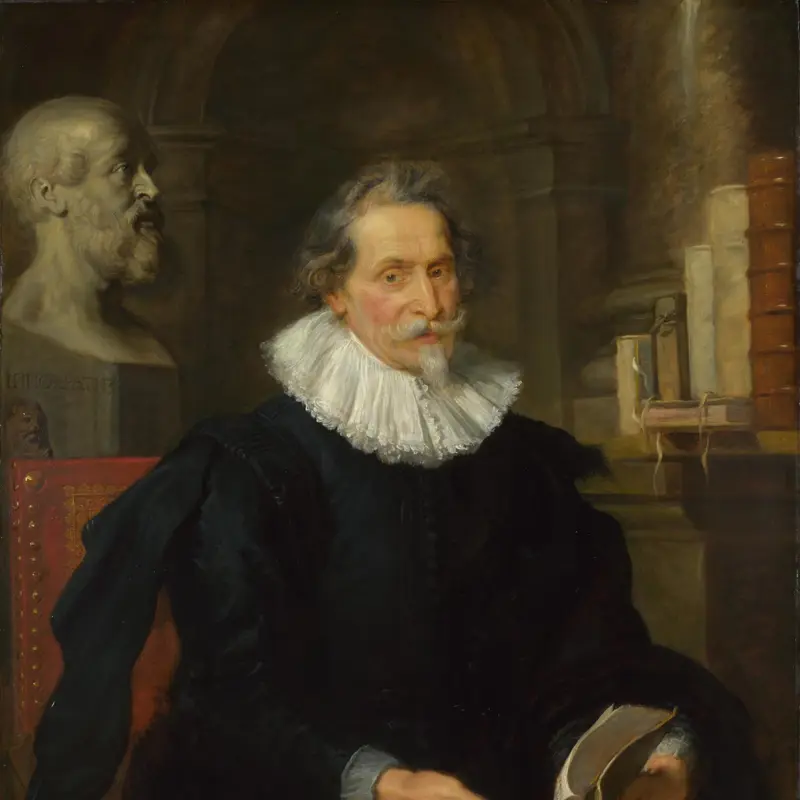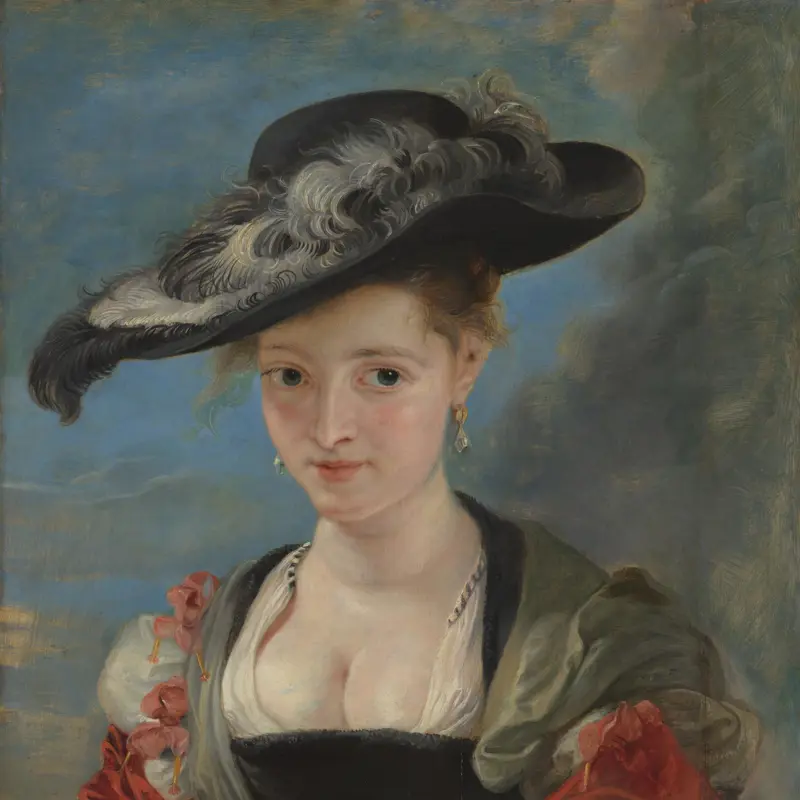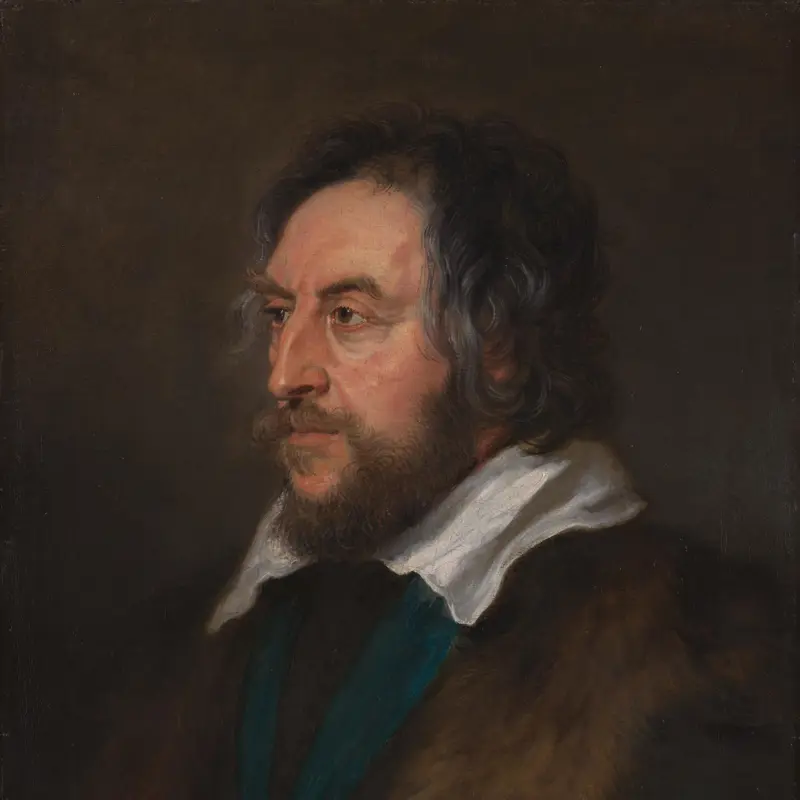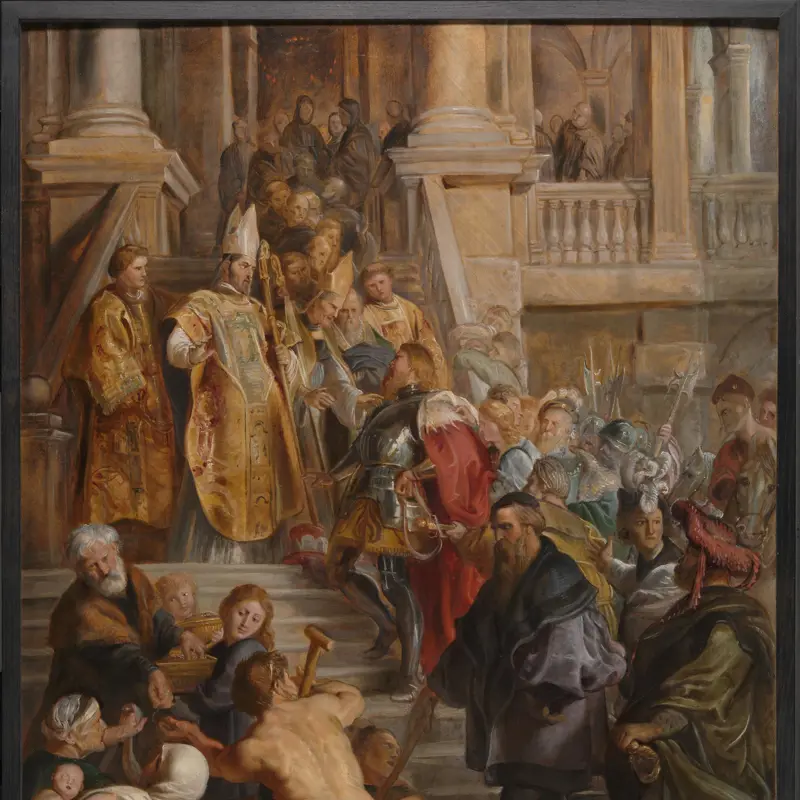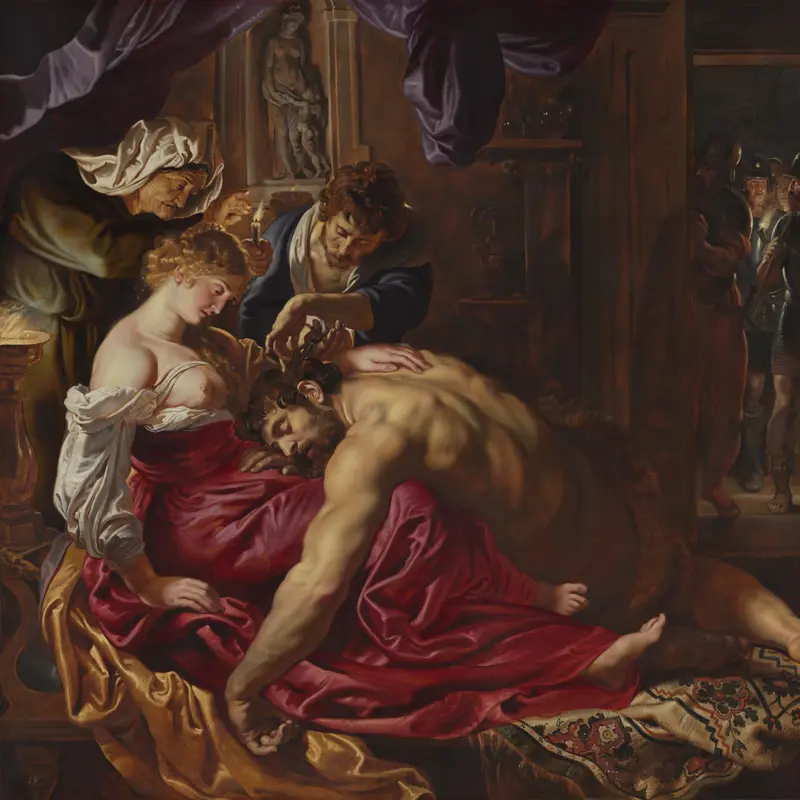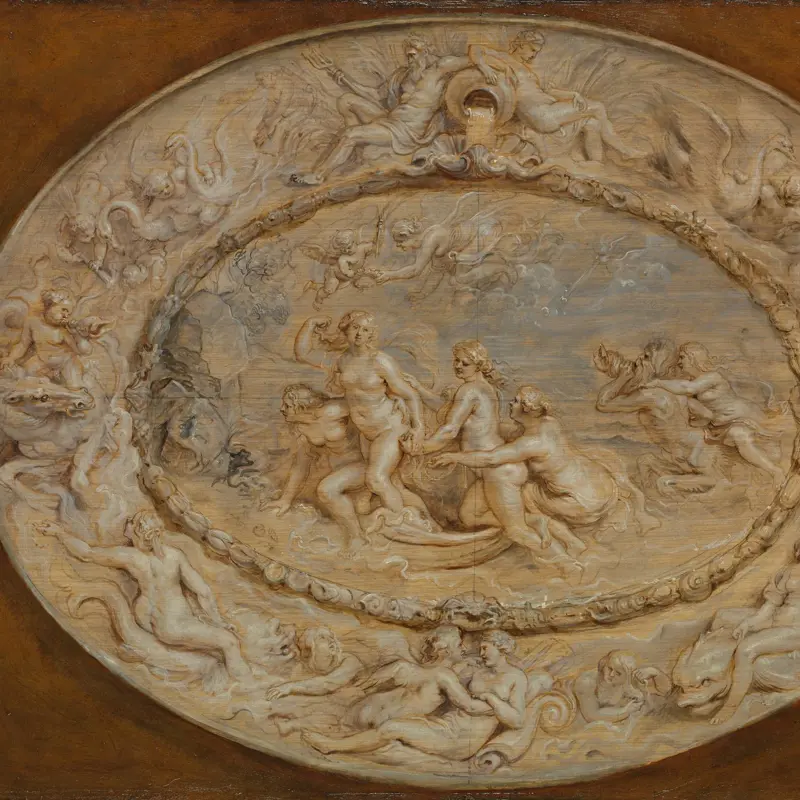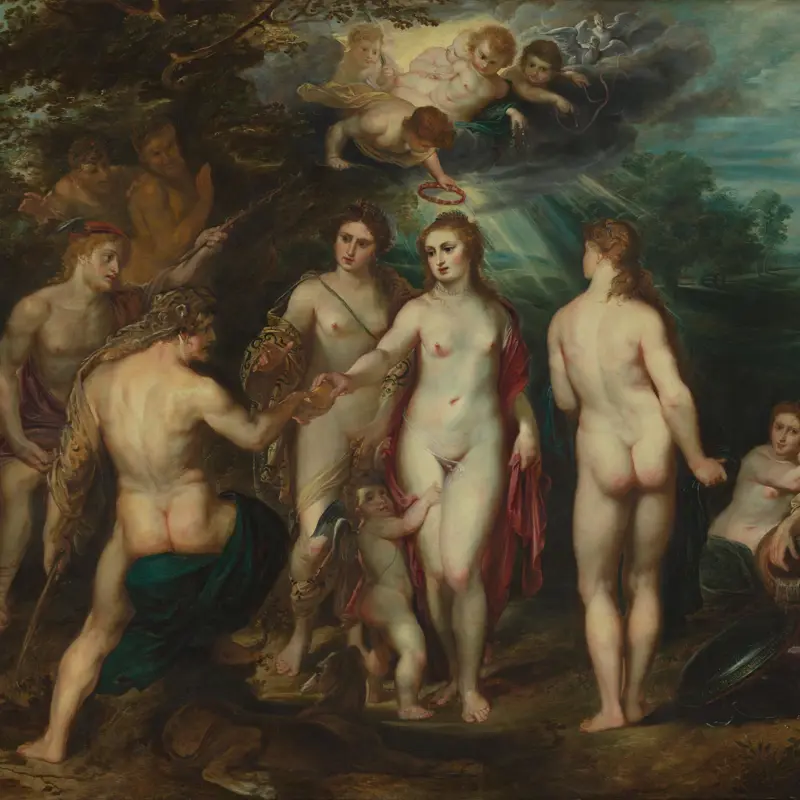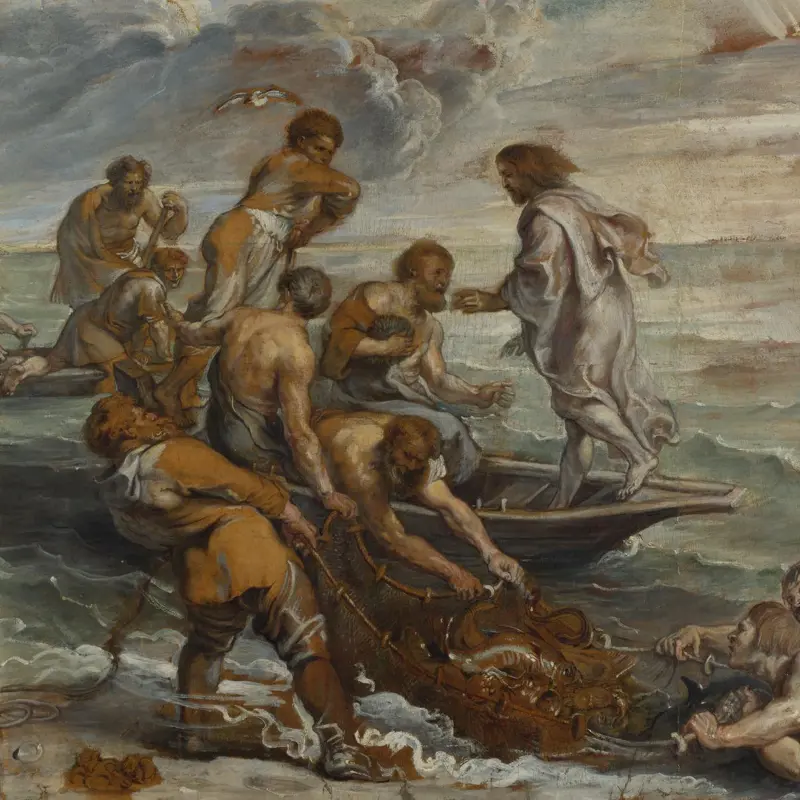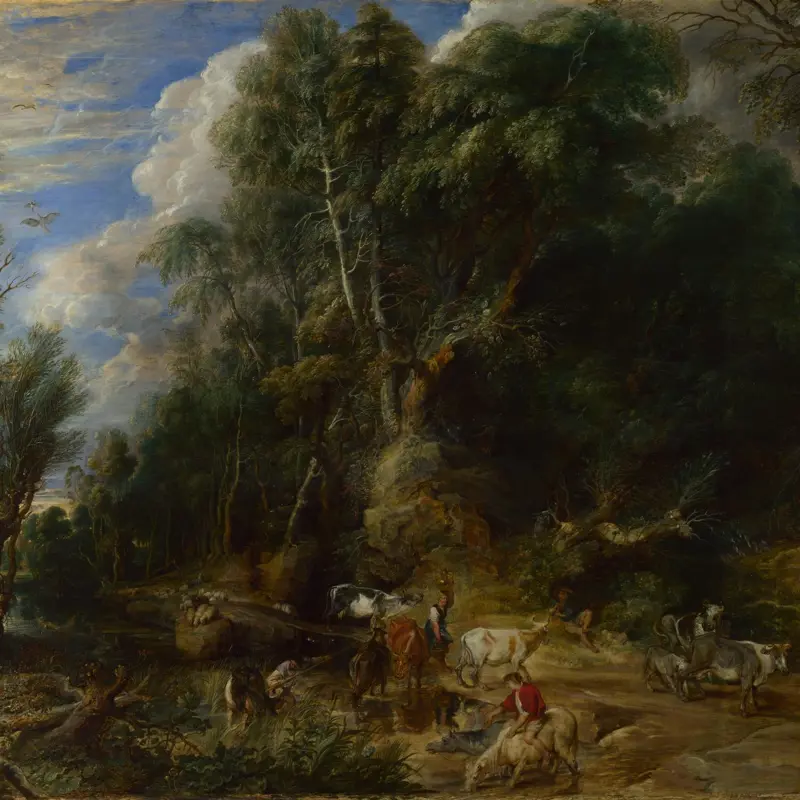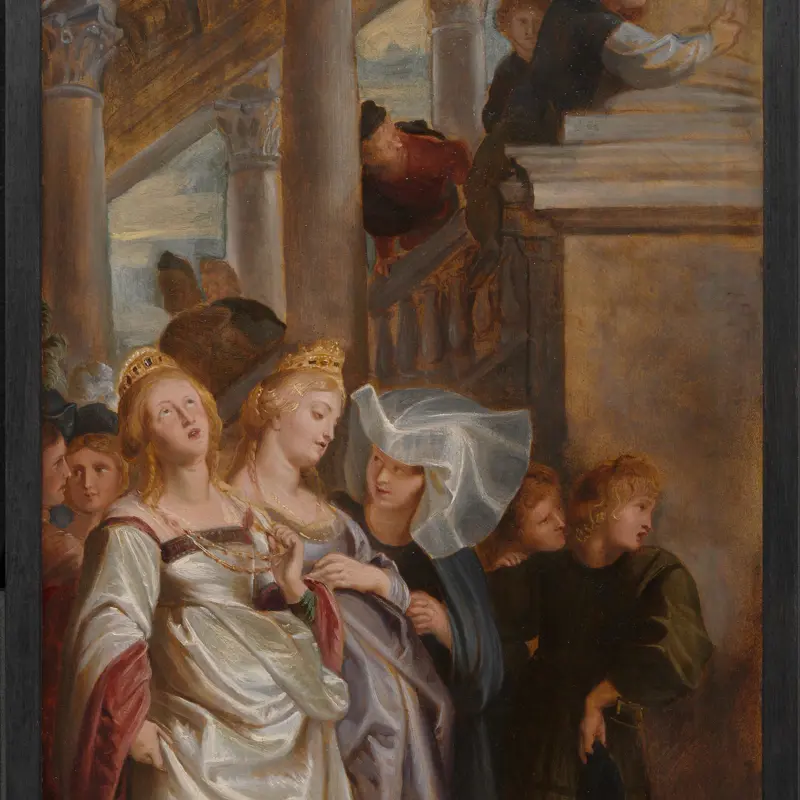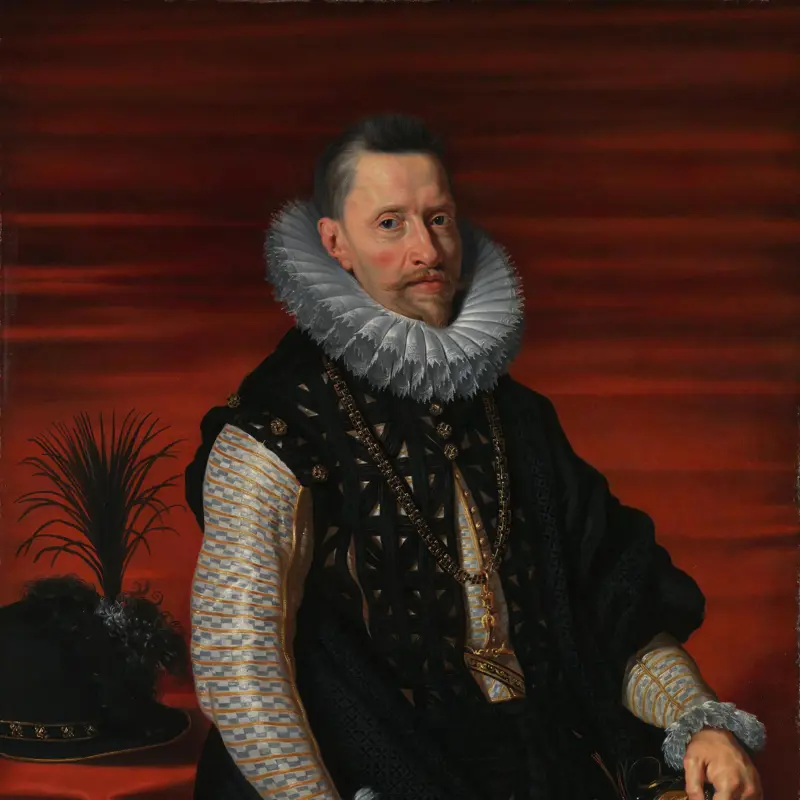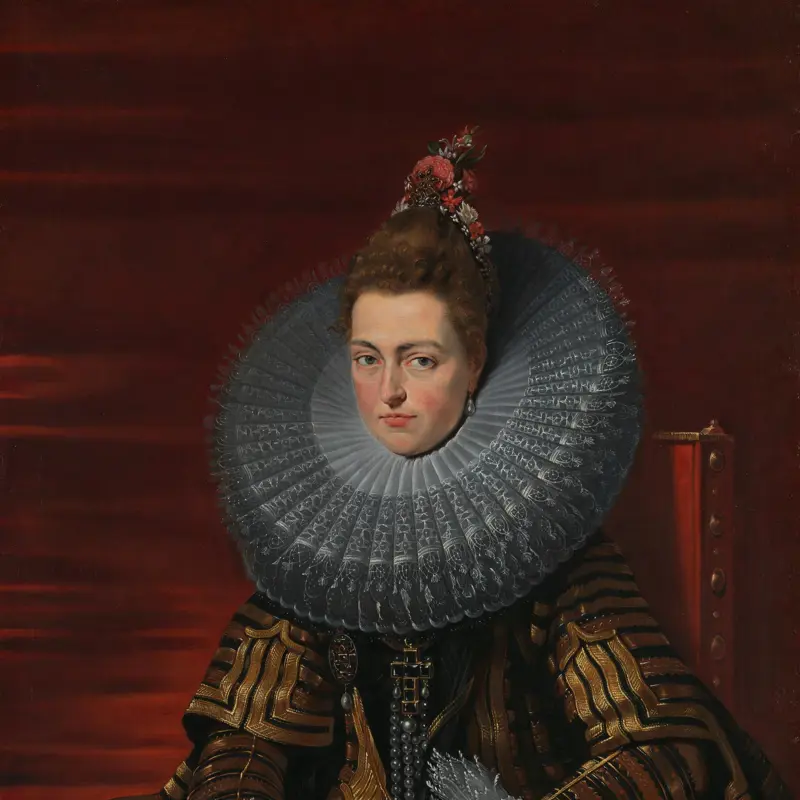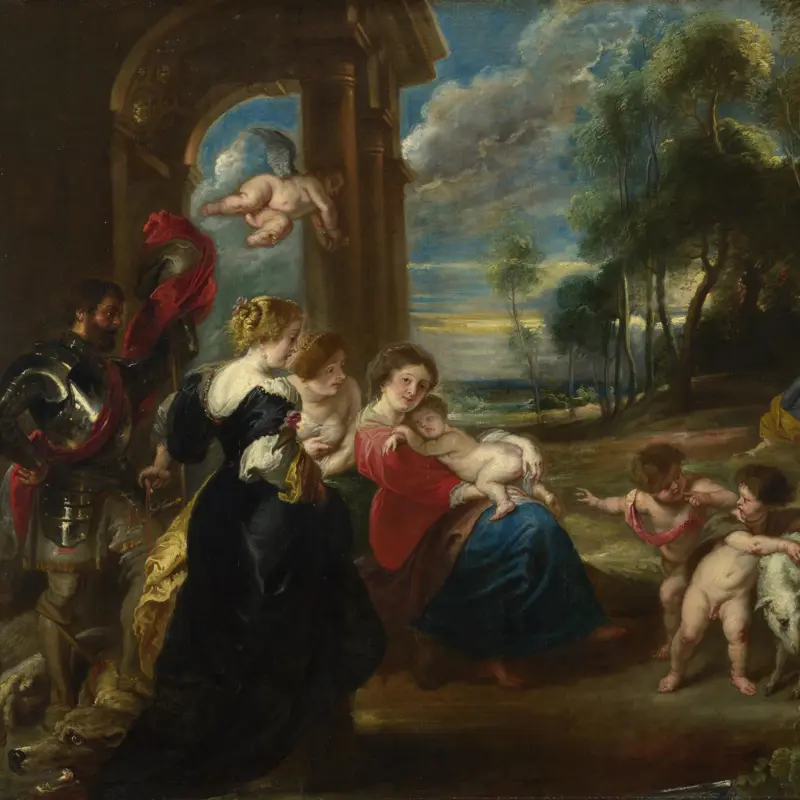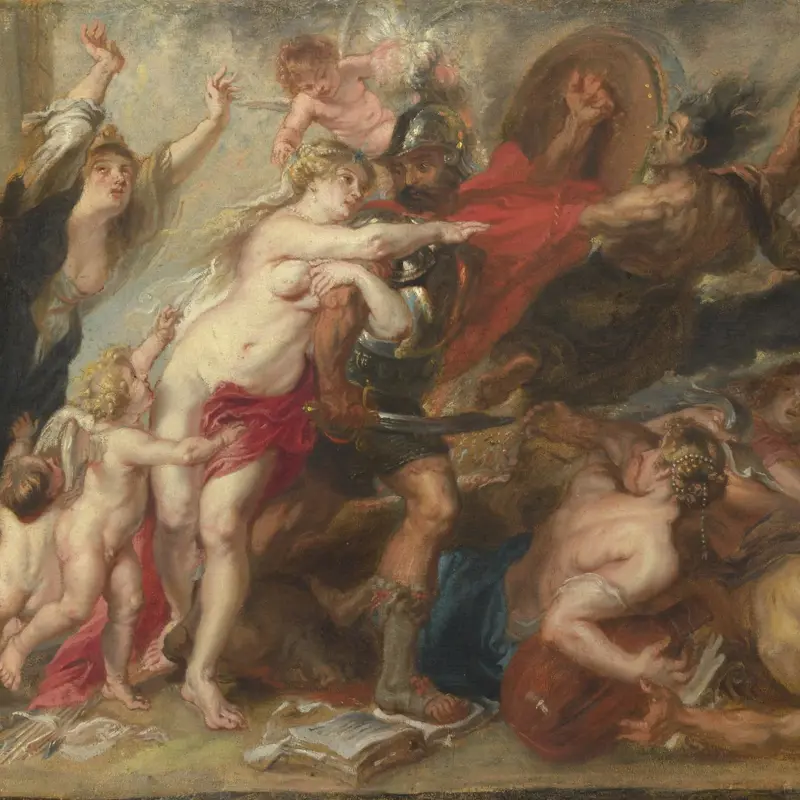Peter Paul Rubens, 'The Coup de Lance', before 1620
About the work
Overview
The soldiers pierced Christ's body to ensure he was dead (John 19: 31-4).
A 'modello' for the high altarpiece for the church of the Récollets, Antwerp, installed in 1620. As this picture differs from the altarpiece in some respects, it may represent the first idea Rubens presented to the authorities who had commissioned the work.
Key facts
Details
- Full title
- The Coup de Lance
- Artist
- Peter Paul Rubens
- Artist dates
- 1577 - 1640
- Date made
- before 1620
- Medium and support
- Oil on oak
- Dimensions
- 64.8 × 49.9 cm
- Acquisition credit
- On loan from the Victoria and Albert Museum
- Inventory number
- L1121
- Location
- Not on display
- Image copyright
- On loan from the Victoria and Albert Museum
- Collection
- Main Collection
About this record
If you know more about this work or have spotted an error, please contact us. Please note that exhibition histories are listed from 2009 onwards. Bibliographies may not be complete; more comprehensive information is available in the National Gallery Library.
Images
More works by Peter Paul Rubens
(Showing 6 of 28 works)
Rubens has created the impression of a wide-open space by depicting a point of interest in the right foreground – the shepherd watching over his sheep – then using the strong diagonal lines of the river, the road, the edges of the clouds and the raking light to trick our eye. Like the shepherd, w...
A group of men out on a lion hunt are now being hunted themselves. In this brown monochrome sketch, Rubens – famously an accomplished painter of horses – has masterfully captured the movement of the rearing horses and thrusting spears, and the terrified faces of the men as they struggle to fend o...
A crowd of people relax on a grass bank, enjoying the spectacle of a flamboyant procession celebrating the return of a great general and his army. The columns and alcoves of classical Roman buildings tower over them. Below, trumpeters and pipers blow their instruments and animals are led to the s...
We look down from a height on a rocky outcrop of ground surrounded by trees, their reflection caught in the tranquil stream drifting past. The woods are dark and dense but unthreatening. There’s a pathway through the undergrowth towards the light.A shepherd leans on his crook, his flock beside hi...
On a crisp autumn morning, the rising sun casts a cool light on the manor house. Shadows are long and there’s a suggestion of dew on the grass of the meadows. The windows of the manor house and the stream meandering past it twinkle, and the few feathery clouds are tinged with gold. We are high up...
A lone driver steers his horses and wagon down a steep bank into what seems like a deep ford. It’s an idyllic scene evoking afternoon light filtering through woodland, and the subject is typical of Rubens’s burst of interest in landscape painting in the last five years of his life. Rather than pa...
In this lively oil sketch, Rubens experiments with ideas for the design and composition of one of a series of paintings on a hunting theme commissioned by Philip IV of Spain to decorate his hunting lodge, Torre de la Parade, just outside Madrid. Rubens’s assistants would have used the sketch as a...
Rubens made this oil sketch, along with two others, in preparation for an altarpiece commissioned for St Bavo’s Cathedral, Ghent. The central panel depicts Saint Bavo, a Roman soldier who left the military for the Christian Church, being received as a monk. This scene, in which King Clothar and h...
This picture was made for King Charles I of England and given to him by Rubens, who was acting as an envoy of Philip IV of Spain, in 1630. The two countries had been at war for five years and both sides were keen for a peace deal. The painting is an allegory, the figures representing different vi...
These three oil sketches, or modelli, were made by Rubens in preparation for an altarpiece for St Bavo’s Cathedral, Ghent, which was commissioned by Bishop Maes around 1611. The central panel shows Saint Bavo, a Roman solider who left the military to join the Christian Church, standing on the ste...
The aged antiquarian and doctor Ludovicus Nonnius meets our gaze with watery eyes. With his slightly parted lips, he appears to engage us in discussing a passage from the book he holds, which is most likely his recently published text, Diaeteticon sive de recibaria, Libri IV. In this he argues fo...
This is almost certainly a portrait of Susanna Lunden (1599–1643), daughter of the Antwerp merchant Daniel Fourment, an old friend and client of Rubens. The portrait was probably made soon after her marriage to Arnold Lunden.It’s a highly distinctive painting – the sitter’s dark, oversized eyes a...
Thomas Howard (1585–1646), 2nd Earl of Arundel and Surrey, was a prominent political figure and a distinguished patron and connoisseur of the arts. Rubens met him on his visit to England in 1629/30, when Arundel was 44 or 45 years old. This portrait isn’t dated, but may well have been made during...
This scene makes up the central panel of an altarpiece Rubens made for St Bavo’s Cathedral, Ghent; this painting is a preliminary sketch for the work. Saints Amand and Floribert receive Saint Bavo, a former Roman soldier, on the steps of St Peter’s Church, also in Ghent.A cleric holds the black h...
Peter Paul Rubens’s Samson and Delilah portrays a tragedy of love and betrayal. Delilah, Samson’s lover, has been bribed to discover the secret of Samson’s supernatural strength. Rubens shows the moment when Delilah tells an accomplice to cut his hair, leaving him powerless. Outside, soldiers wai...
In this exuberant picture, Rubens seems to suggest that apotheosis – a person being elevated to divine status – is not a wholly majestic and dignified affair, as it is presented in many other contemporary paintings. Here, it seems that any great man taken to heaven and granted immortality by the...
This design for a silver basin depicts a number of episodes from classical myth. Venus, the goddess of love, steps out of the giant shell from which, according to Hesiod’s Theogony and the Homeric Hymns, she was born. The birth of Venus from the sea is a playful subject for a basin design: as the...
Moses stands on the left, his hand raised as he beckons people to gaze upon the bronze serpent coiled around the pole held by Eleazar, a priest. The scene is taken from the Old Testament: God had sent a plague of ‘fiery serpents’ to punish the Israelites for their sinfulness and lack of faith (Nu...
Eris, goddess of discord, was the only immortal not invited to an important wedding. Furious at being left out, she threw a golden apple inscribed ‘To the Fairest’ among all the goddesses at the feast. Three claimed the title – Minerva, Juno and Venus. Jupiter, chief of the gods, declared that Pa...
This painting depicts a critical moment in classical mythology. The man on the left with his back to us is Paris, who had been raised as a shepherd but was actually a prince of Troy. He has been asked to judge a beauty contest between the goddesses Venus, Juno and Minerva, and to award a golden a...
According to the Gospel of Luke (5: 1–11), Christ one day approached two fishing boats on the Sea of Galilee. After boarding one and preaching from it, he told the fishermen to cast their nets. Although they had worked all night and caught nothing, the fisherman agreed; when they hauled the nets...
The legend of the abduction of the Sabine women by the Romans is described by several classical writers. While accounts vary, key details are consistent: Romulus, founder and then king of Rome, had built an impressive city, but there was a shortage of women. He invited the Sabines, who lived in t...
A young milkmaid with a brass pitcher on her head and a bucket in her hand leads her herd of cattle away for milking. The rising sun reflects in a pool and reaches through the trees to catch the sleek white hides of some of the cows. It’s an idyllic, rustic scene, yet there is energy: people are...
This is an oil sketch Rubens made in preparation for an altarpiece for St Bavo’s Cathedral, Ghent; it shows the scene that appeared on the left panel. The two women wearing gold crowns are Saints Gertrude and Begga, the sisters of Saint Bavo (who appears in the central panel). Saint Bavo was a Ro...
Studio of Peter Paul Rubens
Against a deep red background, the Archduke Albert of Austria turns towards us with a direct but gentle gaze. His left hand is on the pommel of his sword but his pose is relaxed and unintimidating. His right arm is turned towards us, showing off the delicate pattern of his sleeve and the lace ruf...
Not on display
Studio of Peter Paul Rubens
Isabella Clara Eugenia, Archduchess of Austria, was the daughter of King Philip II of Spain. She is shown sumptuously dressed in black and gold, with a spectacularly large ruff and spiky lace cuffs. She looks out at us with a hint of a smile in her eyes and around her mouth.In 1599 Isabella marri...
Not on display
Studio of Peter Paul Rubens
Within a sprawling rural landscape, the Virgin Mary is seated with the Christ Child in front of a classical building. She holds her sleeping son tenderly while three figures – an unidentified female saint and Saint George with the princess he rescued – gaze at him in awe. The infant Saint John th...
Not on display
After Peter Paul Rubens
Mars, the god of war, is presented with a choice. Should he continue his march into war, or should he show mercy and retreat? Figures representing the different qualities of war and peace surround him, encouraging him to follow their example. Alecto, one of the three goddesses of vengeance (known...
Not on display
You've viewed 6 of 28 works

